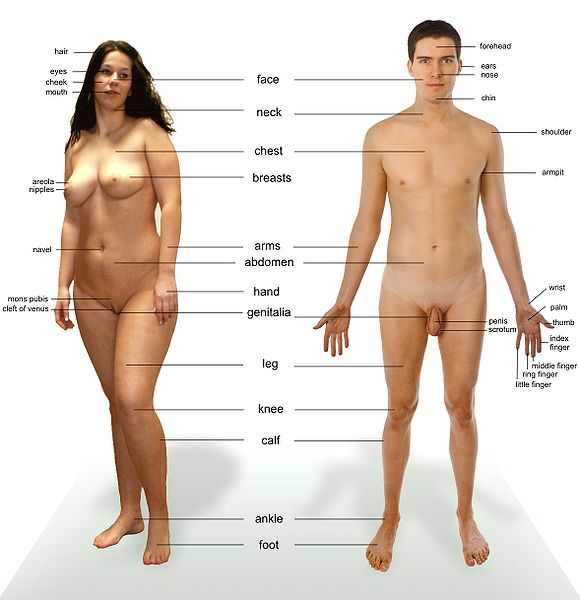Nose
Size and shape
The visible part of the nose protrudes from the face. Its upper end is at a point between the eyes, and its lower end is about an inch above the upper lip of the mouth. Seen from the front, the vertical extension of the nose, as a rule of thumb, corresponds to the vertical extension of the ears.
The human nose changes its shape as a child grows into an adult. A child's nose is not just smaller and shorter, it is also turned at an upward angle so that one can see the opening of the nostrils from a straight frontal view. This is an important detail in figure drawing.
Generally the nose of a male is larger than that of a female.
Parts of the Nose
- Aquiline Nose
- An Aquiline nose (also called Roman nose, hook nose or beak nose) is a human nose with a prominent bridge, giving it the appearance of being curved or slightly bent. The word aquiline comes from the Latin word aquilinus ("eagle-like"), a reference to the curved beak of an eagle.
- Bridge (Nasal bridge)
- The nasal bridge is the name given to the upper, bony part of the nose, overlying the nasal bones.
A lower or higher than average nasal bridge can be a sign of various genetic disorders, such as fetal alcohol syndrome. A flat nasal bridge can be a sign of Down syndrome, Fragile X syndrome, and Fetal alcohol syndrome
- Nasal septum
- The nasal septum separates the left and right airways in the nose, dividing the two nostrils. The fleshy external end of the nasal septum is sometimes also called columella.
- Nostril
- A nostril (or naris, pl. nares) is one of the two channels of the nose, from the point where they bifurcate to the external opening. In humans being, they contain branched bones or cartilages called turbinates, whose function is to warm air on inhalation and remove moisture on exhalation.
In comics and cartoons
The nose is often greatly distorted in caricatures, comic and cartoon drawings. "Funny" characters may be given oversized noses that tell about their character, whereas child characters may be given much smaller noses for more cuteness. In manga and anime, noses are typically extremely small, up to the point of complete omission. In animal-based characters, the nose and mouth often form together a snout or a beak.
- More information is available at [ Wikipedia:Nose ]
These photos are presented for the purposes of identifying various body parts
| Images of Human Body |
|---|
Chat rooms • What links here • Copyright info • Contact information • Category:Root

